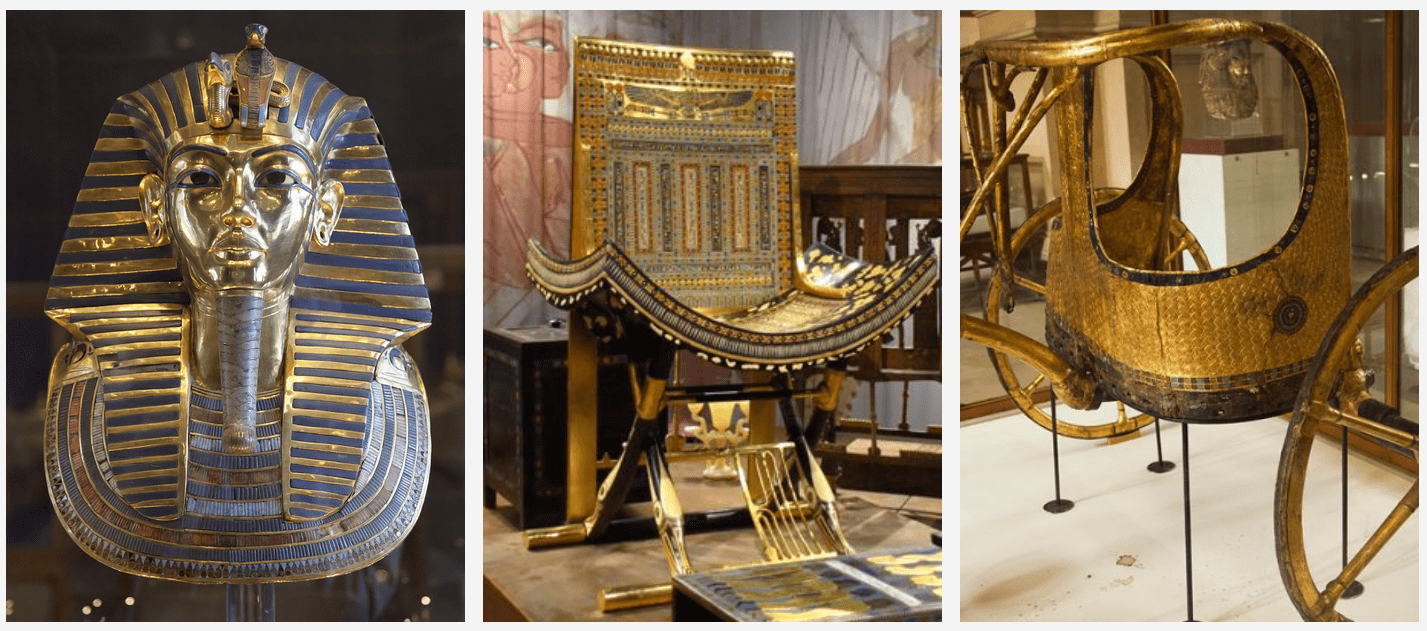The Egyptian Museum in Cairo
The Egyptian Museum in Cairo, also known as the Museum of Egyptian Antiquities, is home to more than 120,000 pieces of ancient Egypt. Designed by the French architect Marcel Dourgnon, this astonishing building is one of the largest museums in the region. It was opened to the public on the 15th of November 1902 to witness the amazing culture and heritage of the ancient Egyptians. This magnificent building of the Egyptian museum was founded in Bulaq in 1858, but it suffered from the flood of the Nile in 1878, moved to Giza in 1891 and stayed there until 1902, and then moved to its current location in Tahrir Square. It represents everything about the great history of the ancient Egyptian civilization, especially the Pharaonic and the Greco-Roman periods.
.jpg)
The Egyptian Museum has two floors; the ground floor has 42 rooms, whereas the first floor has 47 rooms. The ground floor consists of a collection of papyrus and coins used in ancient times. There are also some artifacts from the new kingdom of Egypt. The 1st floor includes two massive statues of Ramses II and Amenhotep III with his wife Tiya, who are from the final two dynasties in Egypt in addition to some items from the tombs of the Pharaohs Thutmosis III, Thutmosis IV, Amenophis II, and Queen Hatshepsut. There are also some artifacts from the Valley of the Kings.
.jpg)
The Egyptian Museum tries to represent the magnificent Egyptian heritage to all people around the world; as it helps them connect the past with the present in one place. Most items in the Egyptian Museum are more than five thousand years old and here are some artifacts you’ve got to see on your visit to the Egyptian Museum:
1. The Treasures of King Tutankhamun

King Tutankhamun was one of the kings of the 18th Dynasty. He ruled the New Kingdom of Egypt from 1334 until 1325 B.C. 1,700 invaluable items inside the Egyptian Museum belonged to the great king Tutankhamun. Those artifacts were discovered between 1922 and 1927.
Inside the tomb was a chariot that was pulled by horses, and some weapons including swords, daggers, arches, and bayonets. There are three golden coffins of King Tut Ank Amun; two of them are displayed inside the Egyptian Museum, and one of them weighs more than 110 kg. The other coffin is displayed in the Valley of the Kings in Luxor. There is also Tutankhamun’s Mask, also known as the funerary mask of Tutankhamun, which is one of the most famous works of art in the world. Discovered by Howard Carter in 1925. The mask is made from 11kg of solid gold. According to Nicholas Reeves, an English Egyptologist; the mask is “not only the quintessential image from Tutankhamun’s tomb, but it is also perhaps the best-known object from ancient Egypt itself.”
2. The Grave Mask of King Amenemope
Amenemope was an ancient Egyptian Pharaoh of the 21st dynasty. He was also the son and the successor of Psusennes I. The Grave Mask is made of gold and cartonnage. Other funerary goods, including funerary masks that portray the king as young, can also be found in the Cairo Museum.
3. Narmer Palette
.png)
The Palette of Narmer is the “first historical document in the world” according to the American Egyptologist Bob Brier. The palette dates back to the 31st century BC. It holds some of the earliest hieroglyphic engravings that have ever been found. It is believed that the palette portrays King Narmer’s unification of Upper and Lower Egypt.
4. Bust of Akhenaten
Akhenaten was an ancient Egyptian king of the 18th dynasty who ruled for 17 years. The statue of Akhenaton was built in the Amarna style, which is mainly characterized by a sense of movement in the images with raised heads.
5. Mummy Mask of Psusennes I
Pseusennes I’s tomb was discovered by Professor Pierre Montet, a French Egyptologist, in Tanis 1940. Unluckily, due to the moisture in the ground in Lower Egypt, most of the wooden objects had disintegrated. But the mask which is made of gold and lapis lazuli was recovered. The mask is considered “one of the masterpieces of the treasures of Tanis.”
Other treasures inside the museum include reliefs, sarcophagi, papyri, funerary art, the contents of various tombs, jewelry, ornaments of all kinds, and other objects. There are also granite figures of Queen Hatshepsut; as well as a figurine of Khufu, a statue of Khafre, and a statue of Menkaure. The museum also houses a small but fine collection of Fayum portraits from Hellenistic and Roman times.
Also: You can check our tours from Here